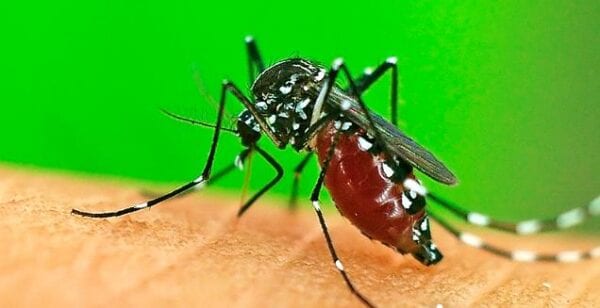By Dr Joel Enejeta
INTRODUCTION
Cerebral malaria is the most common complication and cause of death in severe P. falciparum infection. In falciparum malaria, 10% of all admissions and 80% of deaths are due to the CNS involvement. On the other hand, CNS manifestations are fairly common in malaria and it could be due to not only severe P. falciparum infection, but also high-grade fever and antimalarial drug.
DEFINITION
cerebral malaria can be defined as the presence of unarousable coma, exclusion of other encephalopathies and confirmation of P. falciparum infection. This requires the presence of P. falciparum parasitaemia and the patient to be unrousable with a Glasgow Coma Scale score of 9 or less, and other causes (e.g. hypoglycemia, bacterial meningitis and viral encephalitis) ruled out. To distinguish cerebral malaria from transient postictal coma, unconsciousness should persist for at least 30 min after a convulsion.
PATHOPHYSIOLOGY
Cerebral malaria is the most important complication of falciparum malaria. However, its pathophysiology is not completely understood. The basic underlying defect seems to be clogging of the cerebral micocirculation by the parasitized red cells. These cells develop knobs on their surface and develop increased cytoadherent properties, as a result of which they tend to adhere to the endothelium of capillaries and venules. This results in sequestration of the parasites in these deeper blood vessels. Also, rosetting of the parasitized and non-parasitized red cells and decreased deformability of the infected red cells further increases the clogging of the microcirculation. It has been observed that the adhesiveness is greater with the mature parasites. Obstruction to the cerebral microcirculation results in hypoxia and increased lactate production due to anaerobic glycolysis. The parasitic glycolysis may also contribute to lactate production. In patients with cerebral malaria, C.S.F. lactate levels are high and significantly higher in fatal cases than in survivors. The adherent erythrocytes may also interfere with gas and substrate exchange throughout the brain.
SIGNS SYMPTOMS OF CEREBRAL MALARIA
- impaired consciousness
- delirium
- focal and generalized convulsions
- Mild neck stiffness may be seen
- Retinal haemorrhages occur in about 15% of cases
- dysconjugate gaze, are observed
- Fixed jaw closure and tooth grinding (bruxism) are common.
- Pouting may occur or a pout reflex may be ellicitable
- decerebrate and decorticate rigidity.
INVESTIGATIONS
Lumbar puncture and CSF analysis may have to be done in all doubtful cases and to rule out associated meningitis. In malaria, CSF pressure is normal to elevated, fluid is clear and WBCs are fewer than 10/µl; protein and lactic acid levels are elevated.
EEG may show non-specific abnormalities. CT scan of the brain is usually normal.
MANAGEMENT
- Nursing care: Meticulous nursing is the most important aspect of management in these patients.
- Maintain a clear airway. In cases of prolonged, deep coma, endotracheal intubation may be indicated.
- Turn the patient every two hours.
- Avoid soiled and wet beds.
- Comatose patients should be placed in a semirecumbent position to reduce the risk for aspiration.
- Naso-gastric aspiration to prevent aspiration pneumonia.
- Maintain strict intake/output record. Observe for high coloured or black urine.
- Monitor vital signs every 4-6 hours.
- Changes in levels of sensorium, occurrence of convulsions should also be observed.
- If the temperature is above 390 C, tepid sponging and fanning must be done.
- Serum sodium concentration, arterial carbon dioxide tension, blood glucose, and arterial lactate concentration should be monitored frequently.
- Urethral catheter can be inserted for monitoring urine output.
- Seizures should be treated promptly with anticonvulsants, but their prophylactic use is still in dispute.[1] Diazepam by slow intravenous injection, (0.15 mg/kg, maximum of 10 mg), or intrarectally (0.5-1.0 mg/kg), or intramuscular paraldehyde are the drugs of choice.
- Do not administer the following: Corticosteroids; other anti inflammatory drugs; anti oedema drugs like mannitol, urea, invert sugar; low molecular weight dextran; adrenaline; heparin; pentoxifylline; hyperbaric oxygen; ciclosporin etc. The efficacy of hypertonic mannitol in treatment of cerebral edema is not proven. Therapy with monoclonal antibodies against TNF-a shortens the duration of fever, but has no impact on mortality in patients with severe and complicated malaria, and may increase morbidity due to neurologic sequelae. Although corticosteroids were used in the past to treat patients with cerebral malaria, a controlled trial has shown that they are harmful. Those who received dexamethasone had a longer duration of coma and worse outcome than did patients who received antimalarial chemotherapy alone. Results of studies of antipyretics, pentoxifylline, hyperimmune serum, and iron chelators (deferoxamine) have shown no effect on outcome.[1]
- Antimalarial treatment: Parenteral Quinine has been traditionally the treatment of choice for cerebral malaria. Artemisinin derivatives have been proved to be equally, if not more, effective in treating cerebral malaria.
PROGNOSIS
Cerebral malaria carries a mortality of around 20% in adults and 15% in children. Residual deficits are unusual in adults (<3%). About 10% of the children (particularly those with recurrent hypoglycemia, severe anemia, repeated seizures and deep coma), who survive cerebral malaria may have persistent neurological deficits.
References:
- Andrej Trampuz, Matjaz Jereb, Igor Muzlovic, Rajesh M Prabhu. Clinical review: Severe malaria Critical Care 2003;7:315-323
- Guidelines for the treatment of malaria. World Health Organization. Geneva, 2006. pp 41-61.































